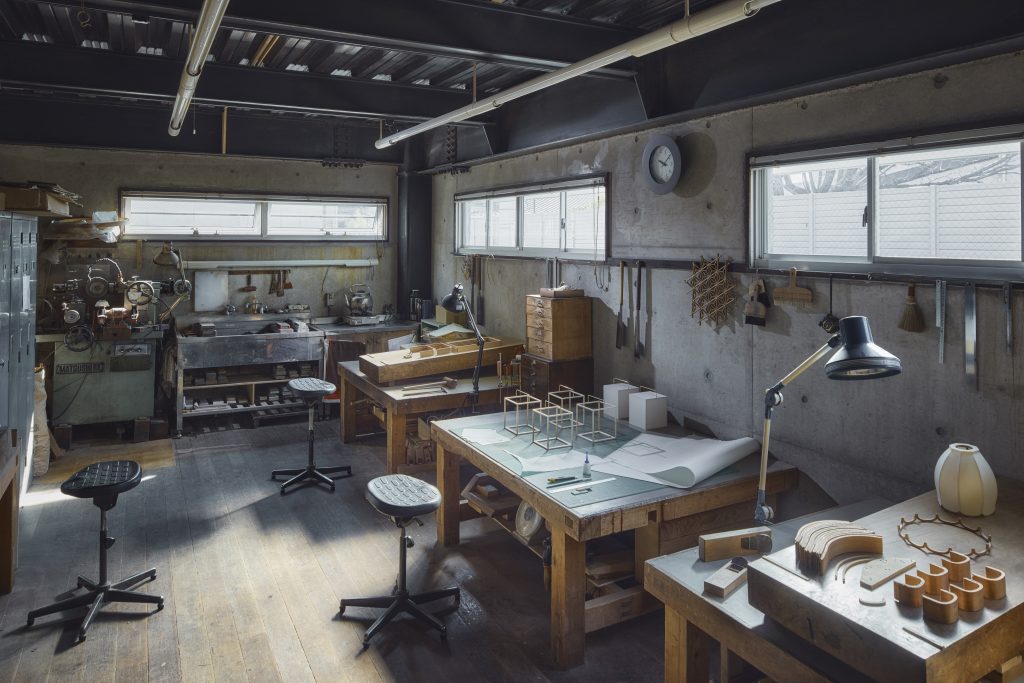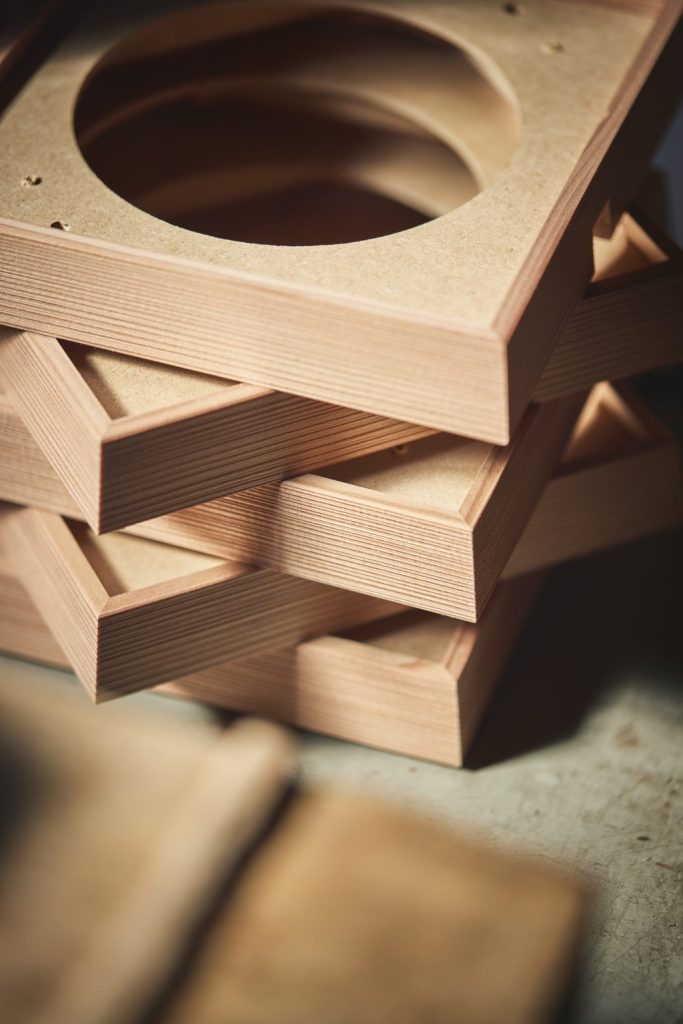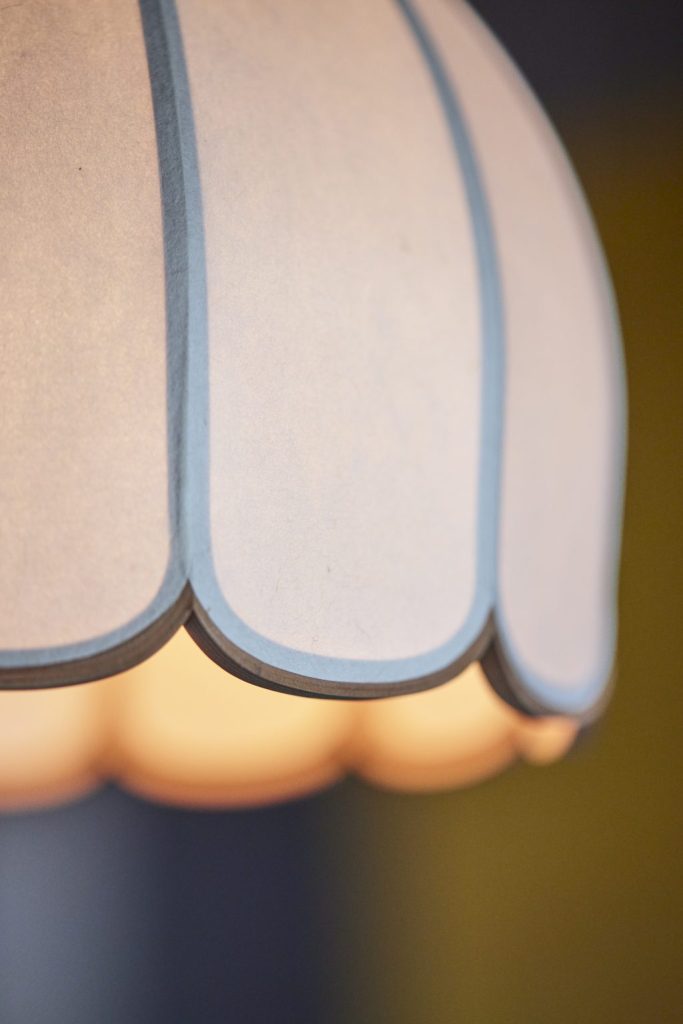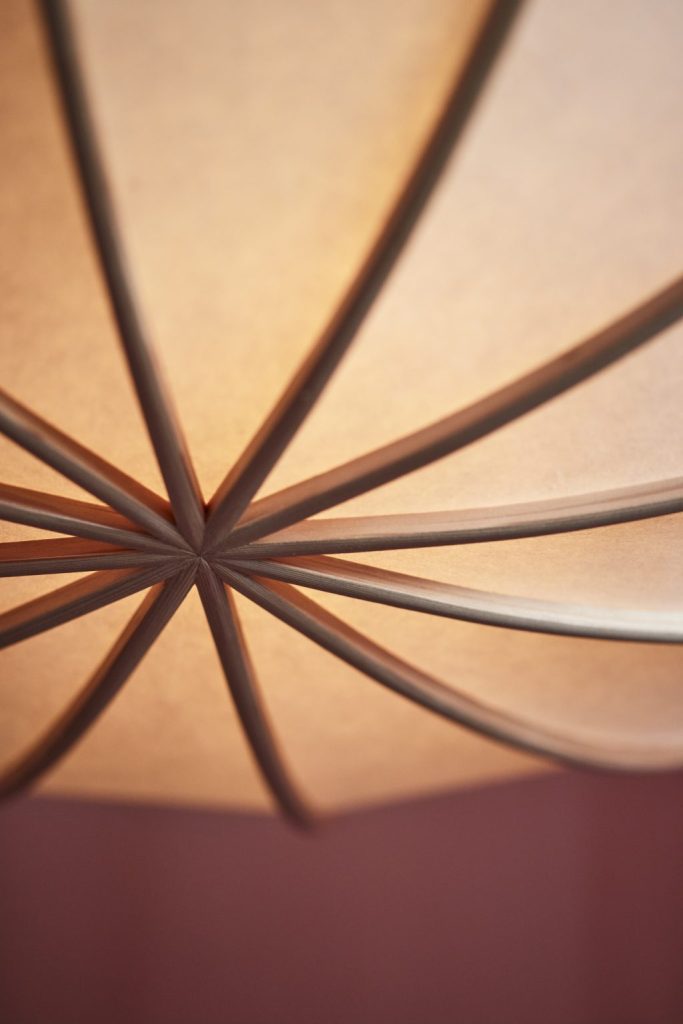
About KOHSEKI
興石は、数奇屋建築の中村外二工務店の設計および建築施工会社として中村義明により1984年に設立されました。
その4年後には指物部と家具部を開設し、これが現在の興石の礎となっています。
指物部では、京指物の技術を用いて、和風照明等の木製品の製作を行っています。
Kohseki was founded by Yoshiaki Nakamura in 1984 as a design & construction company of sukiya style buildings (a house in the style of a tea-ceremony pavilion), Nakamura Sotoji Komuten. Four years later, Kohseki was expanded with a Joinery & Woodwork Division and a Danish Furniture Division. Joinery & Woodwork Division makes wooden products, such as Japanese-style lighting, using the techniques of Kyosashimono.
History of Kyosashimono
春の桜、秋の紅葉、祭りそして歴史の重みを今に伝える数々の神社仏閣と京都には日本人の心を捕らえて放さない物が今も数多く残っています。千余年もの長い間、都として栄えたこの地には、日本の各地から様々な人々が集まりまた去っていきました。京都の産業の技術はこの人々によって持ち込まれ、育み磨かれそして郷土の発展のために再び持ち帰られて来たのです。京指物もその例外ではなく、それぞれの地方の異なる技術が京都というるつぼの中に詰め込まれ、長い時間をかけて練り上げられました。
Much that evokes the essence of what is Japanese remains in the Shinto shrines and Buddhist temples of Kyoto—places that reflect the beauty of spring cherry blossoms and the color of autumn foliage, the excitement and pageantry of festivals and the pervasiveness of history. These places have been both the recipients and stimulators of Japanese art motifs and forms. From generation to generation these skills have been elaborated and refined, and for more than one thousand years, Japanese artisans from every part of the country have made their ways to Kyoto; some to settle and enrich its artistic heritage, others to polish their skills thence to return and enrich the places of their births. The joiners art benefitted greatly from this influx of artisan and artists, new woodworking skills finding their way into the artistic melting pot of Kyoto and melding over the centuries into distinctive, Kyoto type of Joinery.

日本の木工は、くり物・挽物(ろくろ)・たが物(桶・樽)・曲げ物・指物の五つに分けられます。それぞれの技術はそれにふさわしい木材を産する地方で生まれ受け継がれ成長してきました。
しかし、京指物の場合は少し異なるのです。京都の指物師は、貴族やその時々に権力を得た武士たちそしてお茶人たちの求めに応じてありとあらゆるものを作ってきました。この人達から投げ掛けられる難問奇問に答えるために、彼等は蓄積してきた垣根のない木工技術と日本中、時には外国から集められた材料を巧みに使い分けてきたのです。
Japanese woodworking specialties can be divided into five basic categories: kurimono (hollowing out a wood), hikimono (using a lathe), tagamono (tubs and barrels), magemono (molded plywood), and sashimono (joinery). The skills needed to make the products of these different categories have been defined region by region by region and by the types of wood found in a region.
In Kyoto, joiners were commissioned to produce a wide variety of elegant aesthetic goods for the nobility, the powerful samurai lords, and masters of tea ceremony and other arts, as well as more utilitarian goods. In response to the exacting demands of the upper classes, the creativity of the Kyoto woodworkers was challenged and they perfected distinctive, innovative techniques.


Kyosashimono & lighting
そして今、私達はあかりを作ることを求められています。自然の風景を凝縮した庭園の片隅でささやくようにゆれるあかり、家族の語らいを見守り、くつろぎの空間を柔らかく包み込むあかり。人が人として生き始めたときから、ずっとそのぬくもりと安らぎを与え続けてきたあかりには、人の心の移り変わりと場所に応じて様々な形が与えられてきました。
その様々な形を作り上げるために、私達は独自の発想と経験豊かな先人の知恵を駆使し、素材までも木材にこだわることなくあらゆる物に求めていきたいと思います。
Today this heritage of innovation and beauty is being used in the creation of exceptional lamps—lamps to accent a corner of a garden in which the panorama of nature has been encapsulated for human pleasure, lamps which softly wrap relaxing spaces within and without the home. From the very beginnings of civilization, lamp forms appropriate to a wide range of environments and cultures have developed whose warmth and serenity pleasure the human heart.
In our continuing quest for beauty and utility, we combine modern conceptions with the rich legacy of traditional Kyoto skills using a variety of selected woods, alone or in combination with a variety of nonwood materials.


Thinness and Longevity
指物部を立ち上げ、照明器具を作るにあたって、中村が求めたのは、「線の細さ」と「寿命」。繊細なつくりでありながら、世代を超えて永く使い続けていただけることでした。
数寄屋建築に寄り添う和風照明を。そして、建物の中で照明だけが新しくなるのではなく、建物と共に時を重ねていっても壊れないものを。そのような想いで、指物照明を作り続けてきました。
In establishing a Joinery & Woodwork Division and making lighting fixtures, Nakamura required "thinness" and "longevity". It was to be used for a long time, transcending generations, despite its delicate craftsmanship. Japanese-style lighting that would suit the sukiya-style buildings. Lighting that would not break down as it ages, just like the building. With this in mind, we have continued to produce Sashimono lighting.


Having the Virtue of Sustainability
私たちの仕事は生み出すだけではありません。納めた商品を見守っていくことも大事な仕事です。
修理することで、末永くお使いいただけることが、指物の魅力のひとつです。紙の張替から修理まで、何かありましたら、お気軽にお申し付けください。
Our job is not only to create. It is also important to take care of the products we deliver to our customers. Sashimono have the virtue of sustainability, they can be repaired and used for many years to come. If you need anything from reupholstery of papers to repairs, please feel free to contact us.


About KOHSEKI
興石は、数奇屋建築の中村外二工務店の設計および建築施工会社として中村義明により1984年に設立されました。
その4年後には指物部と家具部を開設し、これが現在の興石の礎となっています。
指物部では、京指物の技術を用いて、和風照明等の木製品の製作を行っています。
English follows
Kohseki was founded by Yoshiaki Nakamura in 1984 as a design & construction company of sukiya style buildings (a house in the style of a tea-ceremony pavilion), Nakamura Sotoji Komuten. Four years later, Kohseki was expanded with a Joinery & Woodwork Division and a Danish Furniture Division. Joinery & Woodwork Division makes wooden products, such as Japanese-style lighting, using the techniques of Kyosashimono.
The History of Kyosashimono
春の桜、秋の紅葉、祭りそして歴史の重みを今に伝える数々の神社仏閣と京都には日本人の心を捕らえて放さない物が今も数多く残っています。千余年もの長い間、都として栄えたこの地には、日本の各地から様々な人々が集まりまた去っていきました。京都の産業の技術はこの人々によって持ち込まれ、育み磨かれそして郷土の発展のために再び持ち帰られて来たのです。京指物もその例外ではなく、それぞれの地方の異なる技術が京都というるつぼの中に詰め込まれ、長い時間をかけて練り上げられました。
English follows
Much that evokes the essence of what is Japanese remains in the Shinto shrines and Buddhist temples of Kyoto—places that reflect the beauty of spring cherry blossoms and the color of autumn foliage, the excitement and pageantry of festivals and the pervasiveness of history. These places have been both the recipients and stimulators of Japanese art motifs and forms. From generation to generation these skills have been elaborated and refined, and for more than one thousand years, Japanese artisans from every part of the country have made their ways to Kyoto; some to settle and enrich its artistic heritage, others to polish their skills thence to return and enrich the places of their births. The joiners art benefitted greatly from this influx of artisan and artists, new woodworking skills finding their way into the artistic melting pot of Kyoto and melding over the centuries into distinctive, Kyoto type of Joinery.

日本の木工は、くり物・挽物(ろくろ)・たが物(桶・樽)・曲げ物・指物の五つに分けられます。それぞれの技術はそれにふさわしい木材を産する地方で生まれ受け継がれ成長してきました。
しかし、京指物の場合は少し異なるのです。京都の指物師は、貴族やその時々に権力を得た武士たちそしてお茶人たちの求めに応じてありとあらゆるものを作ってきました。この人達から投げ掛けられる難問奇問に答えるために、彼等は蓄積してきた垣根のない木工技術と日本中、時には外国から集められた材料を巧みに使い分けてきたのです。
English follows
Japanese woodworking specialties can be divided into five basic categories: kurimono (hollowing out a wood), hikimono (using a lathe), tagamono (tubs and barrels), magemono (molded plywood), and sashimono (joinery). The skills needed to make the products of these different categories have been defined region by region by region and by the types of wood found in a region.
In Kyoto, joiners were commissioned to produce a wide variety of elegant aesthetic goods for the nobility, the powerful samurai lords, and masters of tea ceremony and other arts, as well as more utilitarian goods. In response to the exacting demands of the upper classes, the creativity of the Kyoto woodworkers was challenged and they perfected distinctive, innovative techniques.


Kyosashimono & lighting
そして今、私達はあかりを作ることを求められています。自然の風景を凝縮した庭園の片隅でささやくようにゆれるあかり、家族の語らいを見守り、くつろぎの空間を柔らかく包み込むあかり。人が人として生き始めたときから、ずっとそのぬくもりと安らぎを与え続けてきたあかりには、人の心の移り変わりと場所に応じて様々な形が与えられてきました。
その様々な形を作り上げるために、私達は独自の発想と経験豊かな先人の知恵を駆使し、素材までも木材にこだわることなくあらゆる物に求めていきたいと思います。
English follows
Today this heritage of innovation and beauty is being used in the creation of exceptional lamps—lamps to accent a corner of a garden in which the panorama of nature has been encapsulated for human pleasure, lamps which softly wrap relaxing spaces within and without the home. From the very beginnings of civilization, lamp forms appropriate to a wide range of environments and cultures have developed whose warmth and serenity pleasure the human heart.
In our continuing quest for beauty and utility, we combine modern conceptions with the rich legacy of traditional Kyoto skills using a variety of selected woods, alone or in combination with a variety of nonwood materials.


Thinness and Longevity
指物部を立ち上げ、照明器具を作るにあたって、中村が求めたのは、「線の細さ」と「寿命」。繊細なつくりでありながら、世代を超えて永く使い続けていただけることでした。
数寄屋建築に寄り添う和風照明を。そして、建物の中で照明だけが新しくなるのではなく、建物と共に時を重ねていっても壊れないものを。そのような想いで、指物照明を作り続けてきました。
English follows
In establishing a Joinery & Woodwork Division and making lighting fixtures, Nakamura required "thinness" and "longevity". It was to be used for a long time, transcending generations, despite its delicate craftsmanship. Japanese-style lighting that would suit the sukiya-style buildings. Lighting that would not break down as it ages, just like the building. With this in mind, we have continued to produce Sashimono lighting.


Having the Virtue of Sustainability
私たちの仕事は生み出すだけではありません。納めた商品を見守っていくことも大事な仕事です。
修理することで、末永くお使いいただけることが、指物の魅力のひとつです。紙の張替から修理まで、何かありましたら、お気軽にお申し付けください。
English follows
Our job is not only to create. It is also important to take care of the products we deliver to our customers. Sashimono have the virtue of sustainability, they can be repaired and used for many years to come. If you need anything from reupholstery of papers to repairs, please feel free to contact us.

